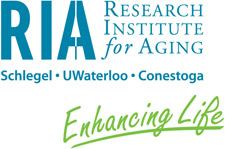Tai Chi: Meditation in Motion
by Maria Tan, BScOT, MSc.
Tai Chi is a Chinese martial art that combines concentration, breathing, and patterns of smooth movements of the whole body. Some people describe it as moving meditation.
There are many styles of Tai Chi, but they all share certain basic moves. Within each style you can learn different patterns of moves, called forms. These forms can take as little as 5 minutes and as long as 30 minutes to perform. This is because some have less than 10 moves, while others have hundreds of moves. Some forms are adapted for people with certain health conditions.
Tai Chi may help to improve:
- balance and strength
- sleep
- stress and mood
- breathing
- blood pressure
- chronic pain
- energy levels.
Practicing Tai Chi is a way to relax and keep your mind and body active at the same time. You don’t need special clothes or equipment, and you can practice indoors or outside – you just need a flat area about 15 feet (5 metres) long.

Check out a Tai Chi class in your community!
Here are a few tips:
- Watch a class and talk to the instructor before signing up.
- Try a few different styles of Tai Chi to see which one you prefer.
- Wear comfortable, loose clothing, and runners with non-slip soles that aren’t too ‘grippy’.
- Tell your instructor about any health issues you have.
- If a move hurts, stop doing it. Ask your instructor how to change the way you do that move.
Learn more:
Tai chi: Discover the many possible health benefits (Mayo Clinic, 2009)
About the Author:
Maria Tan worked as an occupational therapist in geriatric rehabilitation for eight years, then as a content specialist in active living, for a national, bilingual, health promotion network. She has been a tai chi practitioner for many years, and completed a master’s thesis on the topic of Tai Chi and healthy aging.
Click Here for print PDF file – Active Living – Tai-Chi
Are you eating right as you age? Find out with this easy online tool!
By: Hilary Dunn, MSc
As we age, our risk for developing diseases like diabetes and cancer can increase, so prevention becomes even more important. Eating well can help to lower our risk.
But how do we know if we’re eating the right foods and getting enough of the right nutrients?
Professor Heather Keller is Schlegel Research Chair in Nutrition & Aging at the University of Waterloo. She has developed a tool called Nutri-eSCREEN to help older adults find out if their eating habits are supporting their health. The tool also tells you what you can do to improve and points you to resources.
Nutri-eSCREEN is a survey developed specifically for adults 50 and over. It asks you 14 questions that assess your appetite, eating habits, and changes in weight.
“Nutri-eSCREEN is very easy to complete, and we know from research that it’s a good predictor of who needs help with their eating habits. Food and nutrition are very important to healthy aging, and this tool helps point people in the right direction,” says Professor Keller.
Available free online
Nutri-eSCREEN is available online. Anyone can use it free of charge. After you complete the questionnaire, you will receive individual results highlighting what you’re doing well and what can be improved.

A tool with tips you can trust
With all of the information flying around about food and health, it’s hard to know what to believe. Nutri-eSCREEN is a research-based tool that can help you find out if you are at risk for poor nutrition. Plus, you get tips you can trust on how to improve.
Try Nutri-eSCREEN today: www.nutritionscreen.ca/escreen/
Learn more:
For more information about Professor Keller’s nutrition and healthy aging research, visit:
Schlegel-UW Nutrition and Aging Lab
Agri-food for Healthy Aging
About the Author:
Hilary Dunn is the Program Manager of Agri-food for Healthy Aging (A-HA). A-HA is the nutrition research program at the Schlegel-University of Waterloo Research Institute for Aging. You can reach her at hadunn@uwaterloo.ca.


Click Here for print PDF file – Healthy Eating – Are you eating right as you age?

- Categories
Recent Posts

